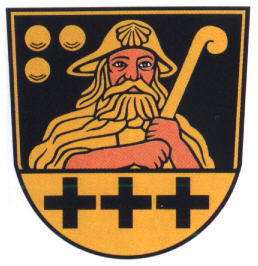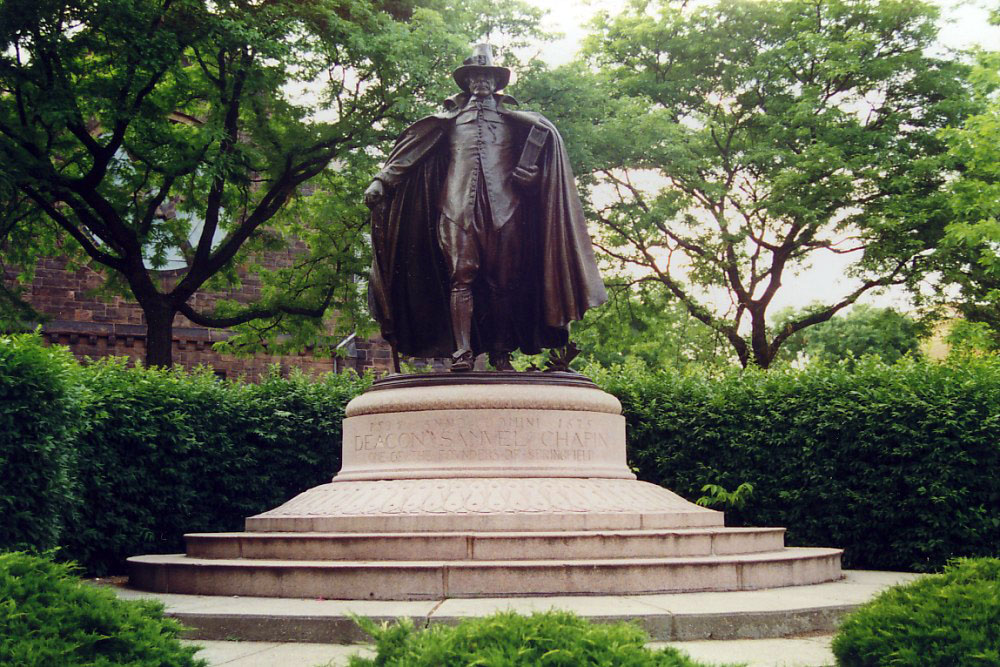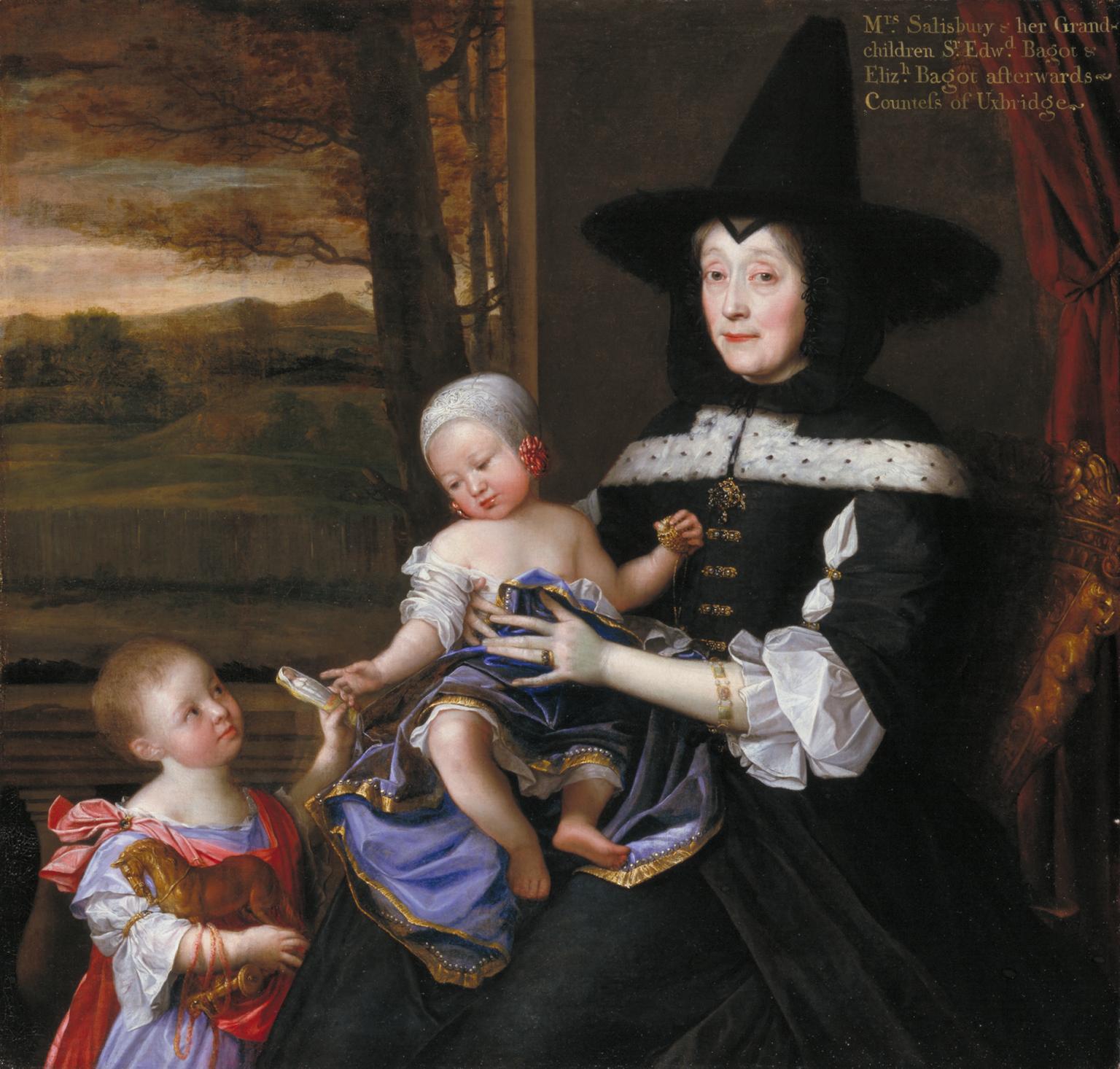|
Capotain
A capotain, capatain or copotain is a tall-crowned, narrow-brimmed, slightly conical "sugarloaf" hat, usually black, worn by men and women from the 1590s into the mid-seventeenth century in England and northwestern Europe. Earlier capotains had rounded crowns; later, the crown was flat at the top. The capotain is especially associated with Puritan costume in England in the years leading up to the English Civil War and during the years of the Commonwealth. It is also commonly called a flat topped hat and a Pilgrim hat, the latter for its association with the Pilgrims who settled Plymouth Colony in the 1620s. Contrary to popular myth, capotains never included buckles on the front of them; this image was created in the 19th century. It has been theorised that the capotain inspired the top hat. __NOTOC__ Image:Unknown Lady Robert Peake c1592.jpg, England, 1592(''Portrait of an Unknown Lady'', attributed to Robert Peake the Elder) Image:Gunpowder Plot conspirators.jpg, England, ... [...More Info...] [...Related Items...] OR: [Wikipedia] [Google] [Baidu] |
Pilgrim's Hat
A pilgrim's hat, ''cockel hat'' or ''traveller's hat'' is a wide brim hat used to keep off the sun. Background The pilgrim's hat traditionally had a scallop shell emblem. This is thought to be a reference to the Christian legend that, after Saint James died in Jerusalem, he was miraculously carried by angels to the Atlantic coast of Spain, although the shell symbol has also been connected to pre-Christian traditions as well. Traditionally it is highly associated with pilgrims on the Way of St. James. The upturned brim of the hat is adorned with a scallop shell to denote the traveller's pilgrim status, although modern walkers wear it much less. Gallery Pilgrim's hats are used in heraldry. File:Othem wall paintings 04.jpg, Saint James the Great with his pilgrim's staff File:POL Olsztyn COA.svg, Olsztyn, Poland File:Bever wappen.svg, Bever GR, Switzerland See also *Pilgrim badge *Pilgrim's staff *Cross of Saint James *Asian conical hat The Asian conical hat is a simple ... [...More Info...] [...Related Items...] OR: [Wikipedia] [Google] [Baidu] |
Top Hat
A top hat (also called a high hat, a cylinder hat, or, informally, a topper) is a tall, flat-crowned hat for men traditionally associated with formal wear in Western dress codes, meaning white tie, morning dress, or frock coat. Traditionally made of black silk or sometimes grey, the top hat emerged in Western fashion by the end of the 18th century. Although it declined by the time of the counterculture of the 1960s, it remains a formal fashion accessory. A collapsible variant of a top hat, developed in the 19th century, is known as an opera hat. Perhaps inspired by the Early Modern era capotain, higher crowned dark felt hats with wide brims emerged as a country leisurewear fashion along with the Age of Revolution around the 1770s. Around the 1780s, the justaucorps was replaced by the previously casual frocks and dress coats. At the same time, the tricorne and bicorne hats were replaced by what became known as the top hat. By the 1790s, the directoire style dress coat with top ... [...More Info...] [...Related Items...] OR: [Wikipedia] [Google] [Baidu] |
Nicholas Hilliard 012
Nicholas is a male given name and a surname. The Eastern Orthodox Church, the Roman Catholic Church, and the Anglican Churches celebrate Saint Nicholas every year on December 6, which is the name day for "Nicholas". In Greece, the name and its derivatives are especially popular in maritime regions, as St. Nicholas is considered the protector saint of seafarers. Origins The name is derived from the Greek name Νικόλαος (''Nikolaos''), understood to mean 'victory of the people', being a compound of νίκη ''nikē'' 'victory' and λαός ''laos'' 'people'.. An ancient paretymology of the latter is that originates from λᾶς ''las'' ( contracted form of λᾶας ''laas'') meaning 'stone' or 'rock', as in Greek mythology, Deucalion and Pyrrha recreated the people after they had vanished in a catastrophic deluge, by throwing stones behind their shoulders while they kept marching on. The name became popular through Saint Nicholas, Bishop of Myra in Lycia, the inspir ... [...More Info...] [...Related Items...] OR: [Wikipedia] [Google] [Baidu] |
The Puritan (Springfield, Massachusetts)
''The Puritan'' is a bronze statue by sculptor Augustus St. Gaudens in Springfield, Massachusetts, United States, which became so popular it was reproduced for over 20 other cities, museums, universities, and private collectors around the world, and later became an official symbol of the city, emblazoned on its municipal flag. Originally designed to be part of Stearns Square, since 1899 the statue has stood at the corner of Chestnut and State Street next to The Quadrangle. History In 1881, Chester W. Chapin, a railroad tycoon and congressman from Springfield, Massachusetts, commissionedDryfhout, p. 162. the renowned sculptor Augustus Saint-Gaudens to create a bronze likeness of his ancestor, Deacon Samuel Chapin (1595–1675), one of the early settlers of the City of Springfield. By 1881, Springfield had become one of America's most innovative industrial and manufacturing centers, and was one of the wealthiest cities in the United States. The sculpture, cast at the Bur ... [...More Info...] [...Related Items...] OR: [Wikipedia] [Google] [Baidu] |
English Clothing
English usually refers to: * English language * English people English may also refer to: Peoples, culture, and language * ''English'', an adjective for something of, from, or related to England ** English national identity, an identity and common culture ** English language in England, a variant of the English language spoken in England * English languages (other) * English studies, the study of English language and literature * ''English'', an Amish term for non-Amish, regardless of ethnicity Individuals * English (surname), a list of notable people with the surname ''English'' * People with the given name ** English McConnell (1882–1928), Irish footballer ** English Fisher (1928–2011), American boxing coach ** English Gardner (b. 1992), American track and field sprinter Places United States * English, Indiana, a town * English, Kentucky, an unincorporated community * English, Brazoria County, Texas, an unincorporated community * Engli ... [...More Info...] [...Related Items...] OR: [Wikipedia] [Google] [Baidu] |
Pointed Hats
Pointed hats have been a distinctive item of headgear of a wide range of cultures throughout history. Although often suggesting an ancient Indo-European tradition, they were also traditionally worn by women of Lapland, the Japanese, the Mi'kmaq people of Atlantic Canada, and the Huastecs of Veracruz and Aztec (e.g., as illustrated in the Codex Mendoza). The Kabiri of New Guinea have the ''diba'', a pointed hat glued together. History The conical hat is known to have existed as early as the Bronze Age in the Middle East, Eurasia, and Central Europe. Conical hats were recorded in ancient Egypt, especially when depicting Osiris and pharaohs, who emulated Osiris' iconography. Conical hats were also recorded by many Indo-European civilizations. Golden hats have been recorded in burial sites in Central Europe. The Scythians of the Eurasian steppes were noted for having pointed hats, often mentioned by other civilizations, such as in the DNa inscription on the tomb of Darius the Grea ... [...More Info...] [...Related Items...] OR: [Wikipedia] [Google] [Baidu] |
17th-century Fashion
The 17th century lasted from January 1, 1601 ( MDCI), to December 31, 1700 ( MDCC). It falls into the early modern period of Europe and in that continent (whose impact on the world was increasing) was characterized by the Baroque cultural movement, the latter part of the Spanish Golden Age, the Dutch Golden Age, the French ''Grand Siècle'' dominated by Louis XIV, the Scientific Revolution, the world's first public company and megacorporation known as the Dutch East India Company, and according to some historians, the General Crisis. From the mid-17th century, European politics were increasingly dominated by the Kingdom of France of Louis XIV, where royal power was solidified domestically in the civil war of the Fronde. The semi-feudal territorial French nobility was weakened and subjugated to the power of an absolute monarchy through the reinvention of the Palace of Versailles from a hunting lodge to a gilded prison, in which a greatly expanded royal court could be more easily k ... [...More Info...] [...Related Items...] OR: [Wikipedia] [Google] [Baidu] |
16th-century Fashion
The 16th century begins with the Julian year 1501 ( MDI) and ends with either the Julian or the Gregorian year 1600 ( MDC) (depending on the reckoning used; the Gregorian calendar introduced a lapse of 10 days in October 1582). The 16th century is regarded by historians as the century which saw the rise of Western civilization and the Islamic gunpowder empires. The Renaissance in Italy and Europe saw the emergence of important artists, authors and scientists, and led to the foundation of important subjects which include accounting and political science. Copernicus proposed the heliocentric universe, which was met with strong resistance, and Tycho Brahe refuted the theory of celestial spheres through observational measurement of the 1572 appearance of a Milky Way supernova. These events directly challenged the long-held notion of an immutable universe supported by Ptolemy and Aristotle, and led to major revolutions in astronomy and science. Galileo Galilei became a champion ... [...More Info...] [...Related Items...] OR: [Wikipedia] [Google] [Baidu] |
Janet Arnold
Janet Arnold (6 October 1932 – 2 November 1998) was a British clothing historian, costume designer, teacher, conservator, and author. She is best known for her series of works called ''Patterns of Fashion'', which included accurate scale sewing patterns, used by museums and theatres alike. She went on to write ''A Handbook of Costume'', a book on the primary sources on costume study, and ''Queen Elizabeth's Wardrobe Unlock'd'', as well as many other books. Arnold was awarded the inaugural Sam Wanamaker Award in 1998. After her death, the Society of Antiquaries of London who had previously made her a fellow, created a grant in her name, as did The Costume Society, which she helped to found. Biography Janet Arnold was born at Duncan House, Clifton Down Road in Bristol on 6 October 1932. Her father, Frederick Charles Arnold was an ironmonger, whilst her mother, Adeline Arnold, was a nurse. She was educated at The Red Maids' School and took a keen interest in clothes based on the ... [...More Info...] [...Related Items...] OR: [Wikipedia] [Google] [Baidu] |
Toque
A toque ( or ) is a type of hat with a narrow brim or no brim at all. Toques were popular from the 13th to the 16th century in Europe, especially France. The mode was revived in the 1930s. Now it is primarily known as the traditional headgear for professional cooks, except in Canada where the term ''toque'' is primarily used for knit caps. Name The word ''toque'' has been known in English since around 1500. It is a loan word from the French (15th century), presumably by the way of the Spanish 'woman's headdress', from Arabic طاقة, itself from Old Persian 'veil, shawl'. The word in Breton means 'hat'. The spelling with ⟨que⟩ is Middle Breton, and the Modern Breton spelling is . Old Breton spells the word . History and uses A tall, black toque made of silk or velvet, often ornamented with an aigrette, was fashionable among the Spanish nobility during the 1500s. This style is seen in a 1584 portrait of Isabella Clara Eugenia as well as Sofonisba Anguisso ... [...More Info...] [...Related Items...] OR: [Wikipedia] [Google] [Baidu] |
List Of Headgear
This is an incomplete list of headgear (anything worn on the head), both modern and historical. Hats File:Akubra-style hat.jpg, Akubra File:98-5-E Helmet, Flight, U.S. Army Air Corps, Type A-II (5123665596).jpg, Leather flight helmet File:Balmoral bonnet black.jpg, Balmoral bonnet, Balmoral File:Baseball cap.jpg, Baseball cap File:Paulgoldschmidt1-head.jpg, Batting helmet File:Beanie 1.jpg, Beanie (seamed cap), Beanie or ''skully'' and or visor beanie. File:Jonathan_Bourne-May_(cropped).jpg, Bearskin cap File:Beaver-felt-hat-ftl.jpg, Beaver hat File:Sven Palmqvist 1965.jpg, Beret File:StrawBoater.jpg, Boater (also basher, skimmer, cady, katie, somer, or sennit hat) File:Hufflepuff Hat.jpg, Bobble hat (tuque) File:Tigerstripehat.JPG, Boonie hat File:Bundesarchiv_Bild_102-00635%2C_Rotarmist_mit_Budjonny-Mütze.jpg, Budenovka File:A girl with a beautiful smile.jpg, Bucket hat, also ''fishing hat'', ''ratting hat'' (UK) or ''Dixie Cup hat'' (US) File:PaulStrandBowlerHat.jpg, Bowler ... [...More Info...] [...Related Items...] OR: [Wikipedia] [Google] [Baidu] |
1650–1700 In Fashion
Year 165 ( CLXV) was a common year starting on Monday (link will display the full calendar) of the Julian calendar. At the time, it was known as the Year of the Consulship of Orfitus and Pudens (or, less frequently, year 918 ''Ab urbe condita''). The denomination 165 for this year has been used since the early medieval period, when the Anno Domini calendar era became the prevalent method in Europe for naming years. Events By place Roman Empire * A Roman military expedition under Avidius Cassius is successful against Parthia, capturing Artaxata, Seleucia on the Tigris, and Ctesiphon. The Parthians sue for peace. * Antonine Plague: A pandemic breaks out in Rome, after the Roman army returns from Parthia. The plague significantly depopulates the Roman Empire and China. * Legio II ''Italica'' is levied by Emperor Marcus Aurelius. * Dura-Europos is taken by the Romans. * The Romans establish a garrison at Doura Europos on the Euphrates, a control point for the commercial ro ... [...More Info...] [...Related Items...] OR: [Wikipedia] [Google] [Baidu] |







